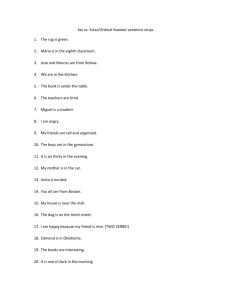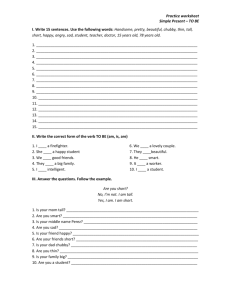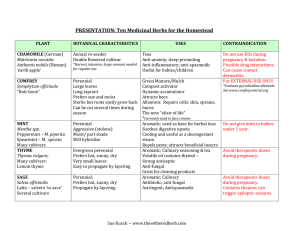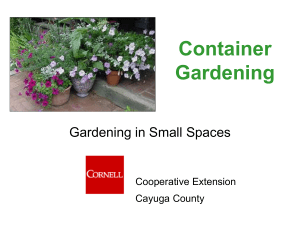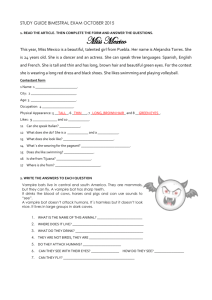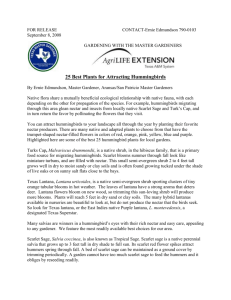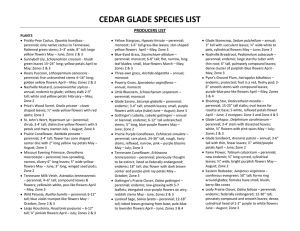Creating Marketable Native Plant Products
advertisement
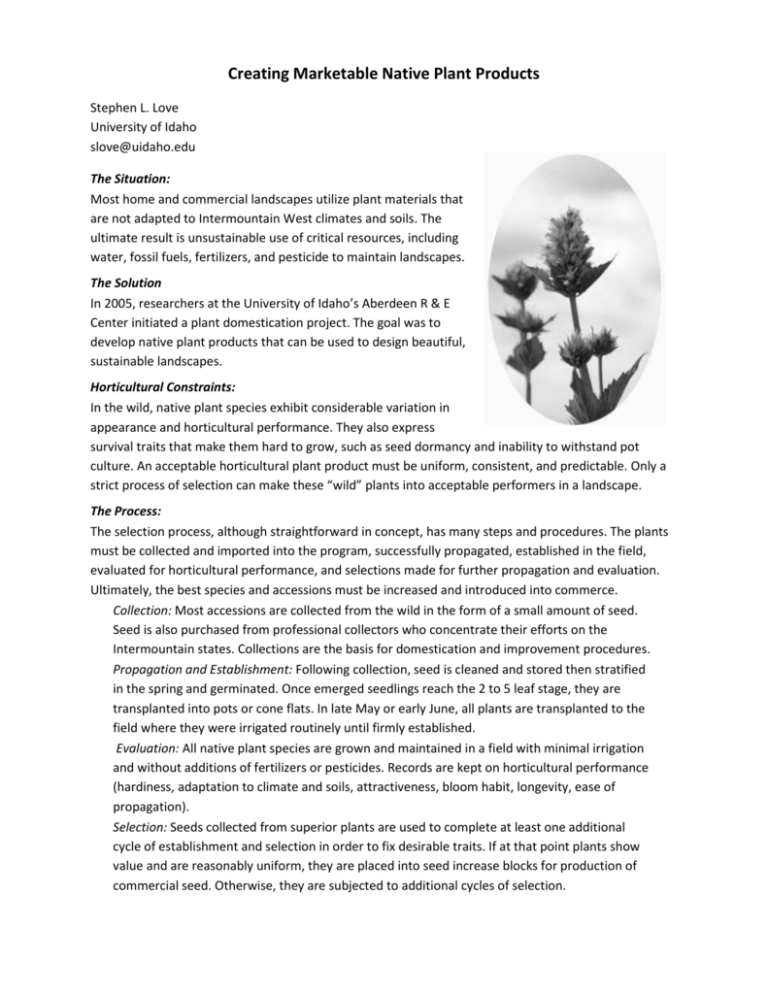
Creating Marketable Native Plant Products Stephen L. Love University of Idaho slove@uidaho.edu The Situation: Most home and commercial landscapes utilize plant materials that are not adapted to Intermountain West climates and soils. The ultimate result is unsustainable use of critical resources, including water, fossil fuels, fertilizers, and pesticide to maintain landscapes. The Solution In 2005, researchers at the University of Idaho’s Aberdeen R & E Center initiated a plant domestication project. The goal was to develop native plant products that can be used to design beautiful, sustainable landscapes. Horticultural Constraints: In the wild, native plant species exhibit considerable variation in appearance and horticultural performance. They also express survival traits that make them hard to grow, such as seed dormancy and inability to withstand pot culture. An acceptable horticultural plant product must be uniform, consistent, and predictable. Only a strict process of selection can make these “wild” plants into acceptable performers in a landscape. The Process: The selection process, although straightforward in concept, has many steps and procedures. The plants must be collected and imported into the program, successfully propagated, established in the field, evaluated for horticultural performance, and selections made for further propagation and evaluation. Ultimately, the best species and accessions must be increased and introduced into commerce. Collection: Most accessions are collected from the wild in the form of a small amount of seed. Seed is also purchased from professional collectors who concentrate their efforts on the Intermountain states. Collections are the basis for domestication and improvement procedures. Propagation and Establishment: Following collection, seed is cleaned and stored then stratified in the spring and germinated. Once emerged seedlings reach the 2 to 5 leaf stage, they are transplanted into pots or cone flats. In late May or early June, all plants are transplanted to the field where they were irrigated routinely until firmly established. Evaluation: All native plant species are grown and maintained in a field with minimal irrigation and without additions of fertilizers or pesticides. Records are kept on horticultural performance (hardiness, adaptation to climate and soils, attractiveness, bloom habit, longevity, ease of propagation). Selection: Seeds collected from superior plants are used to complete at least one additional cycle of establishment and selection in order to fix desirable traits. If at that point plants show value and are reasonably uniform, they are placed into seed increase blocks for production of commercial seed. Otherwise, they are subjected to additional cycles of selection. Seed Production and Commercialization: Breeder seed is produced at the experiment station for the purpose of industry transference. To enhance commercialization potential, a partnership has been formed with Native Roots, a subsidiary of Conservation Seeding and Restoration in Kimberly, Idaho. Superior selections are being grown by Native Roots in foundation seed blocks in preparation for a 2014 product launch date. Research Results: To date, approximately 2,500 native plant accessions, representing about 940 species, have been collected and evaluated at the Aberdeen R & E Center. 131 selections are in seed increases and 93 of the best selections have been transferred to the Native Roots industry partner. To illustrate the program success, the table below provides descriptions of a small portion of the superior selections destined for commercial exploitation. Species Description Amelanchier alnifolia Serviceberry Shrub -Dwarf selection 30” tall, abundant white spring flowers and summer purple fruit. Bright orange-yellow fall color. Sporobolus wrightii Giant Sacaton Grass - 7’ tall, attractive light green leaves, large feathery seed heads that provide nice winter interest. Poa secunda Big Bluegrass Grass - 20” tall, flowers early and remains attractive through the summer, very drought tolerant. Hymenoxys acaulis Sundancer Daisy Perennial - 8” tall, silver to silver-green mat leaves, bright yellow 2” flowers, blooms all summer. Very drought tolerant. Penstemon labrosus Scarlet Penstemon Perennial - 40” tall, basal leaves and tall wands, bright orange-yellow flowers, blooms July-September. Penstemon cardinalis Cardinal Penstemon Perennial - 30” tall, large healthy leaves and tall flower spikes, dark red flowers, blooms June-July. Penstemon confertus Yellow Penstemon Perennial - 12” tall, dark green mat leaves, upright flower stalks produce numerous light yellow flowers in May-June. Eriogonum heracleoides Wyeth’s Buckwheat Perennial - 18” tall, white to buff flowers over dark green foliage, competitive with companion plants. Eriogonum ovalifolium Oval-leaf Buckwheat Perennial - 6” tall, round mats of tightly packed silver leaves, pom-pom flowers in many colors from white to dark red. Eriogonum strictum Strict Buckwheat Perennial - 18” tall, silver mat leaves give rise in late fall to an umbrella of intensely white flowers. Agastache cana Hummingbird Mint Perennial - 40” tall, small gray leaves, dark pink flowers from mid-summer to late fall, nice fragrance. Aquilegia desertorum Desert Columbine Perennial - 15” tall, dark green leaves, dark red/yellow flowers. Blooms in early to mid-summer. Drought tolerant. Aquilegia scopulorum Utah Columbine Perennial - 6” tall, dark blue leaves, beautiful blue and white flowers on short stems. Potentilla thurberi Thurber’s cinquefoil Perennial - 20” tall, dark green palmate leaves, dark red flowers over a long period.

